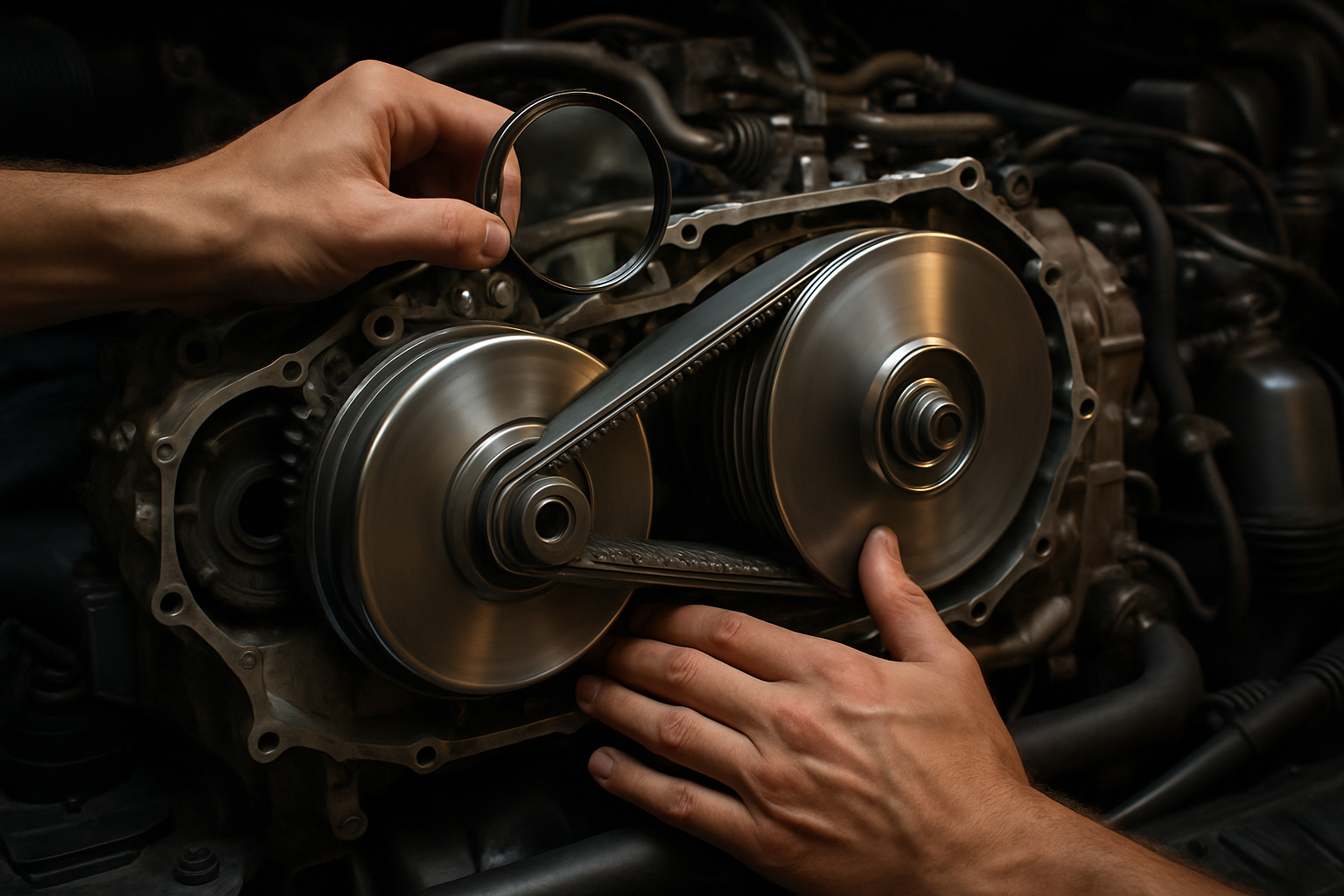Preventive maintenance checklist for long-term engine health
Regular preventive maintenance keeps an engine running efficiently and reduces the chance of costly breakdowns. A consistent schedule of inspections, diagnostics, fluid checks, and component replacements preserves performance, fuel economy, and safety. This checklist covers routine tasks owners and technicians should track to extend engine life and maintain vehicle reliability worldwide.

How often should diagnostics and inspections occur?
Periodic diagnostics and visual inspections form the backbone of preventive maintenance. Perform a basic inspection every month or before long trips: check fluid levels, look for leaks, inspect belts and hoses for cracks, and scan error codes with an OBD-II tool every few months or after the check engine light appears. Scheduled professional diagnostics during routine service intervals (typically every 12,000–15,000 miles or as specified by the manufacturer) catch issues early and identify trends that a single visual check might miss.
Keeping a digital or paper maintenance log helps track inspection dates and diagnostic codes. Early identification of repeated faults prevents small problems from cascading into major engine repairs and supports informed discussions with mechanics.
What routine checks protect the engine and fuel system?
Protecting the engine and fuel system starts with regular filter and fuel system maintenance. Replace air and fuel filters per manufacturer intervals to prevent contaminants from affecting combustion. Inspect the fuel lines and connections for signs of wear, swelling, or leaks. Use quality fuel and consider fuel injector cleaning if you notice rough idling, hesitation, or reduced fuel efficiency. Monitoring fuel pressure and injector performance during periodic diagnostics helps maintain proper air-fuel ratios and prevents premature engine wear.
Belts and timing components deserve focused attention: cracks, glazing, or looseness in accessory belts can affect alternator and power steering function, while timing belt/chain conditions directly impact valve timing and engine safety. Follow replacement schedules closely to avoid catastrophic engine damage.
How to maintain brakes, tires, and suspension?
While not engine components, brakes, tires, and suspension affect overall vehicle loads and handling, indirectly influencing long-term engine health and efficiency. Check tire pressure and tread regularly to ensure even wear; underinflated tires increase rolling resistance and fuel consumption. Inspect brake pads and rotors for wear and listen for unusual noises that can signal issues needing prompt service. Suspension problems, such as worn shocks or misaligned wheels, change driving dynamics and can place extra strain on drivetrain components.
Wheel alignment and balancing should be performed when tires are replaced or if steering pull, vibration, or uneven tire wear is observed. Proper alignment extends tire life and improves fuel economy, reducing overall stress on the engine during routine driving.
How to care for battery, coolant, and lubrication?
A healthy electrical and cooling system directly supports engine longevity. Test battery condition and charging system performance regularly, especially before seasonal extremes; weak batteries and poor charging can strain the starter and alternator. Keep battery terminals clean and secure. For cooling, maintain recommended coolant levels and composition, and inspect hoses and the radiator for leaks or corrosion. Overheating is one of the fastest ways to cause severe engine damage, so timely coolant service is essential.
Lubrication is equally critical: change engine oil and filter at intervals suited to driving conditions and the oil type used. Regular oil analysis or sticking to conservative service intervals reduces wear on bearings, camshafts, and other internal parts. Check transmission and differential fluids as part of the same maintenance rhythm to preserve the entire drivetrain.
How to address corrosion and safety systems?
Corrosion control prolongs the life of external engine components and electrical connections. Inspect under the hood for rust on mounts, brackets, and fasteners; clean and treat affected areas and replace heavily corroded parts. Corrosion on electrical connectors can cause intermittent faults that trigger diagnostics or affect sensors critical to engine control. Protect vulnerable areas and use dielectric grease where appropriate to limit moisture ingress.
Safety systems—such as emission controls, sensors, and engine mounts—should be assessed during inspections. Malfunctioning sensors (oxygen, MAF, MAP) can force the engine to run rich or lean, increasing wear and reducing efficiency, while degraded engine mounts can amplify vibrations that accelerate component fatigue.
When should filters, belts, and other parts be replaced?
Follow manufacturer recommendations for replacing filters, belts, and timing components, but adjust intervals based on driving conditions. Severe conditions—frequent short trips, dusty environments, towing, or heavy loads—often require more frequent oil and filter changes and earlier belt replacements. Inspect belts and hoses at every service; look for fraying, cracks, glazing, or soft spots and replace immediately if signs of deterioration appear.
Keep an inventory of critical replacement parts and record replacement dates and mileage. Proactive replacement of wear items like air filters, fuel filters, serpentine belts, and timing belts reduces the risk of sudden failures that can lead to engine damage and downtime.
Routine lubrication, alignment, and ongoing safety checks
Regular lubrication of moving components, periodic wheel alignment, and systematic safety checks complete a comprehensive maintenance approach. Grease fittings, linkages, and suspension joints where applicable. Proper lubrication reduces friction and heat generation, preserving both engine and ancillary components. Alignment checks ensure drivetrain components operate within designed tolerances and prevent uneven loads on the engine during steering and cornering.
Create a maintenance schedule tailored to your vehicle and driving habits, and share it with your service provider so that inspections and replacements follow a consistent plan. Consistency in these basic practices pays dividends in engine life and overall vehicle reliability.
Conclusion
A preventive maintenance checklist focused on diagnostics, timely fluid and filter changes, belt and component inspections, corrosion control, and safety system checks helps extend engine life and maintain reliable performance. Regular documentation and adjustments for driving conditions ensure this checklist remains practical and effective for drivers worldwide.





